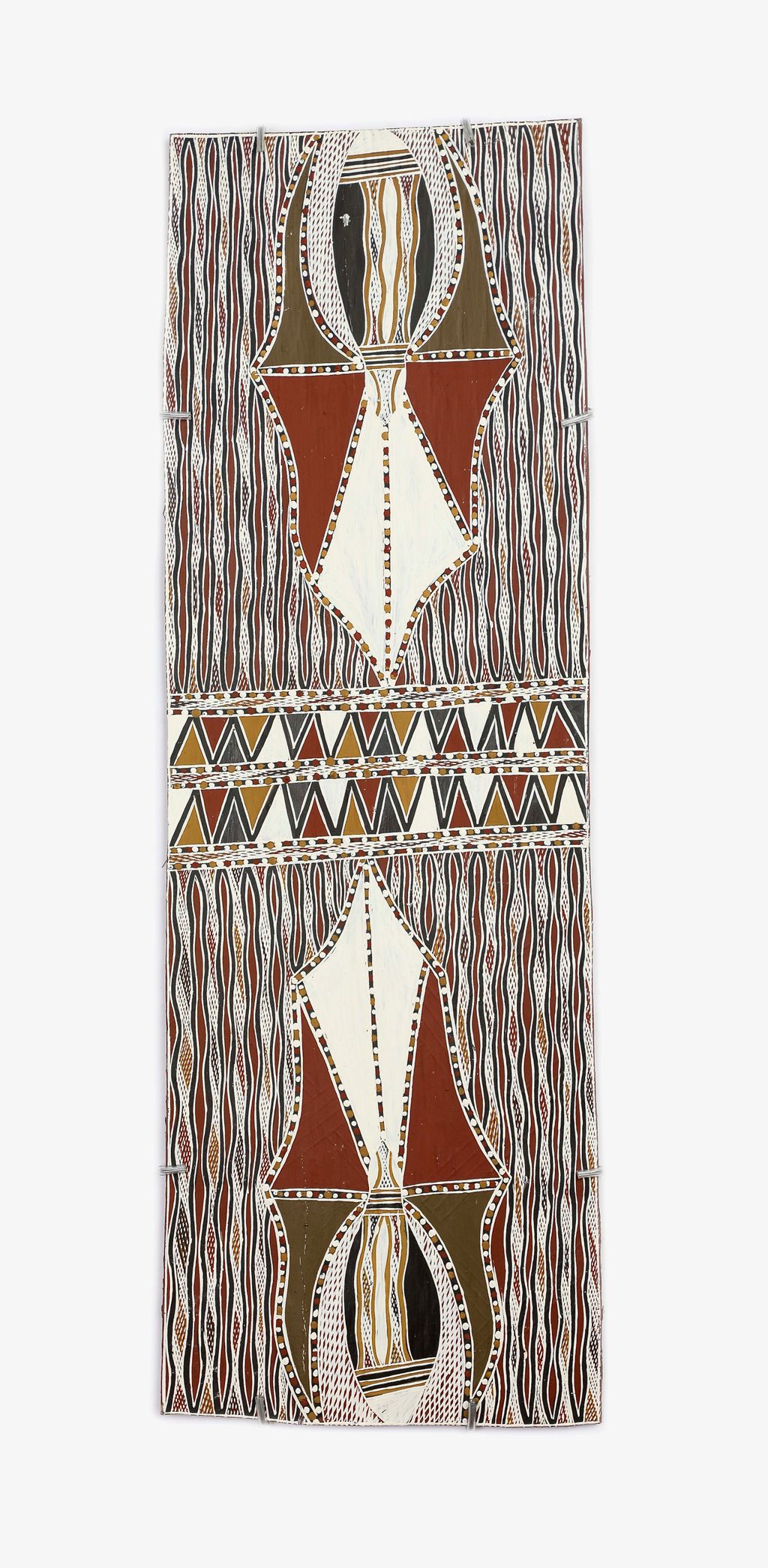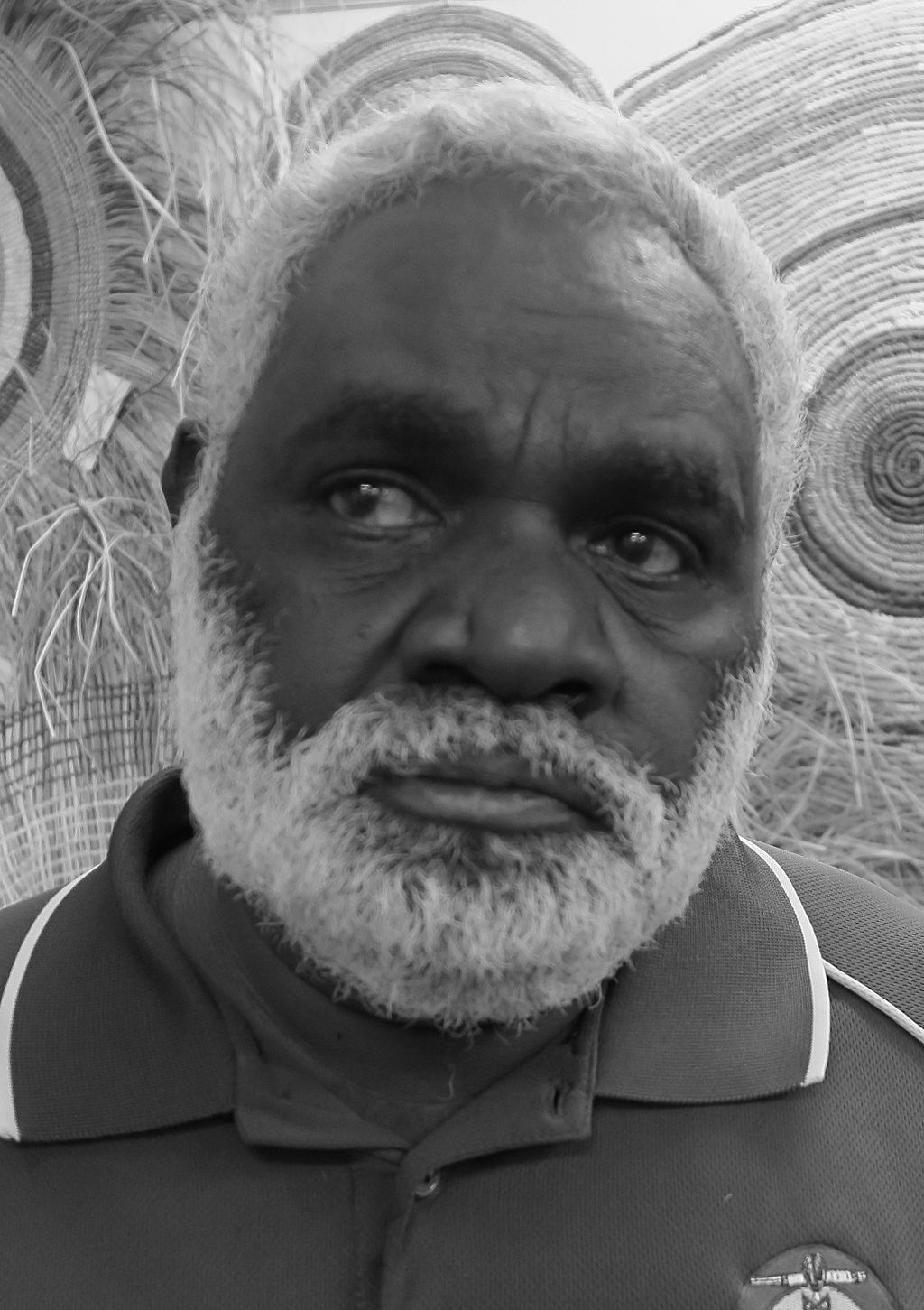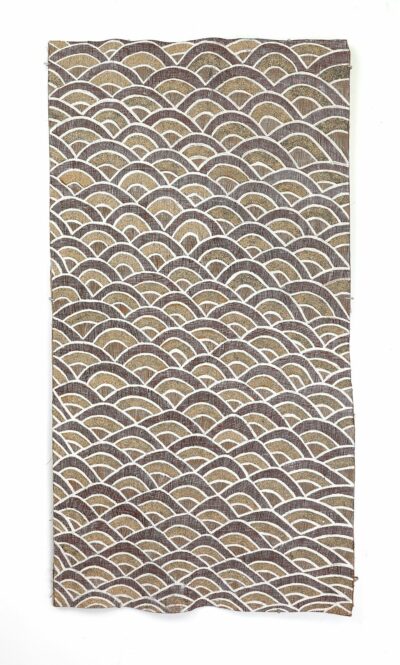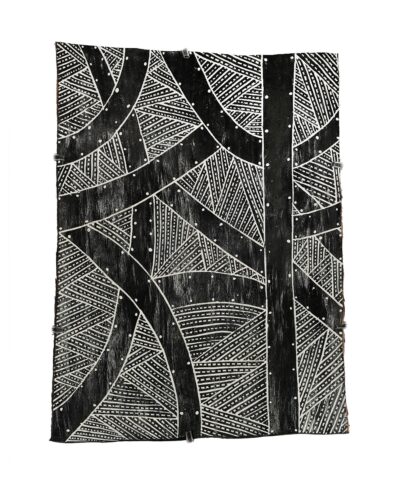Description
buwathay munyarryun
Earth pigments on Stringybark
81 x 28cm
Year: 2022
ID: 5188-22
Mädi
The clan groups of the north east Arnhem Land region are structured around a complex system of kinship law. As with Yolŋu personal relationships, ie with mother, with father, uncle, grandfather or wife or child, a particular Yolŋu clan will have these same relationships with other clans. This creates a network that links the ancestral events of creation which is said to have its foundations laid down by the Waŋarr (creator beings) of this time.
These Ancestral creators, manifest in the ability to change form and travel vast distances, shaped the landscape, populated the land and gave the people Yolŋu Rom – lore that encompasses languages, law and title to land, song dance and ceremony – all factors that build the sophisticated complexities of kinship structure.
This, as with many works produced from this area explains a basic foundation to a particular event(s) associated with the artists clan, and by following networks established within Yolŋu culture, associations with other clans, lands and events are revealed. This information is divulged to outsiders at different levels according to the confidence that the narrator has of his listeners ability to comprehend. The ‘bottom line’ of meaning of Yolŋu images of miny’tji (sacred design) remains secret with the fully initiated male.
This work belongs to the Wangurri clan. This is recognised by the fact that miny’tji (sacred clan design- the detailed cross hatching ‘behind’ the figurative imagery) belonging to the Wangurri covers the piece. This piece shows disguised representations of a mangrove log washed in from saltwater Maŋgalili country into the Wangurri clan freshwater area of Gularri, the Cato River. Mädi is the female Rock Lobster.
It contained Milka or mangrove worms which died once it washed into the fresh water. This pattern was etched in the log and is here repeated as the Wangurri sacred clan design which appears throughout. The songs of the Wangurri invest this log with sacred power allowing it to make paths that other beings and landscape features could follow.
It is also a representation of the ‘mangrove worm’ with its wood eating jaws shut. Here the log has completed a journey through the tidal interplay of fresh, salt and brackish to the fresh waters of Gularri near Dhalinybuy – the actual residence of the artist and homeland for the Waŋgurri.
The log also has reference to the canoe used by the ancestral hunters who were the first Maŋgalili people to die, having drowned at sea, and the hollow log used for final mortuary rites.






Reviews
There are no reviews yet.